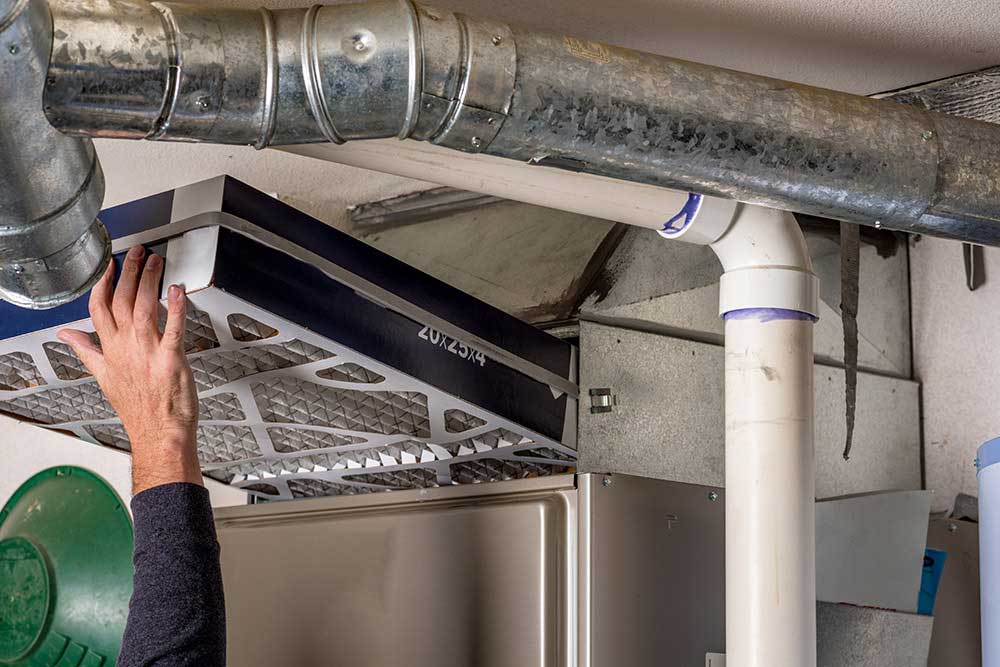Very often, people purchase vacation rental properties because they want to have a vacation home for their family to enjoy. And, by turning the property into a rental investment, they can cover the costs of maintaining the house throughout the year. In many cases, if the property is in regular use, it means the owner can enjoy the property at no cost while even earning additional income.
Of course, when your vacation home becomes a rental property, it’s essential to start thinking about it as you would a business. You want to regularly review where the property is costing you money and determine ways to minimize those costs over the long-term. An energy audit is a great place to start. Not to mention that in today’s environmentally conscious culture, vacationers are looking for accommodations that lower their carbon footprint and make them feel they are doing their best for the planet. Including your energy audit and the environmental upgrades you’ve made in your listing can be a great selling feature.
Naturally, if you suspect your home is drastically overusing energy, it may be worth the investment to hire a professional energy auditor to do an inspection.
Also, if you’re renovating your property, it’s a perfect time to hire a consultant to inspect your project and the home overall. Not to mention, a professional may be able to help you understand and better take advantage of government rebate programs.
Although, for most properties, merely doing an audit yourself and making some simple upgrades can still yield big payoffs.
So, where do you start?
We’ve put together this helpful checklist to walk you through the various areas to audit. And, some tips to ensure you’re making the most of your home energy use.
Air Leaks
Anyone who grew up in Canada has no doubt heard one of their parents say, “close that door, I’m not paying to heat the neighbourhood!” When you’re spending money to heat a Whistler property through the winter, you want to make sure you’re not pouring that warmth out through air leaks and causing your furnace to run overtime. Not only is it a considerable energy loss, but you are going to over-stress and wear out the furnace well ahead of its time
Here is how you test for leaks.
Step One. The Walk About
Do a walk around the home and pay attention to the airflow. Do you find cold pockets in certain rooms and warm spots in others? These can be signals that there is an airflow problem in the house.
Step Two. The Usual Suspects
Inspect the obvious places where air enters the home. Doorways, window frames, ductwork and even electrical lines. If the exterior walls have been cut to allow for these openings, you may be losing heat in these spaces. There are two easy methods for testing airflow. The first is to place a bit of water on your hand and hold it near the suspected leak sites. The moisture on your hand will make it more sensitive to feel the airflow. The next method is a little more advanced. You are going to create negative pressure in the home and use an incense stick to see which direction the smoke is pulling. Following the smoke will lead you to where the air is escaping.
Creating Negative pressure in your Home:
- Close all exterior doors, windows, and fireplace flues
- Turn off the water heater, furnace, and any combustion appliances
- Turn On all exhaust fans
- Put the dryer on a no-heat setting.
Step Three. Fix the Flow
Once you’ve identified where the air is escaping, the next job is to seal those leaks.
Windows
Use weather-stripping on the parts of the window that move to create a better seal when closed. Fill any gaps between the window frame and the wall with caulking. Depending on the age of the windows, it may be worth replacing your windows with a more energy-efficient variety. Most windows will last approximately 15-20 years, but before you make the switch, have a look at this guide to replacing your windows, produced by BC Housing.
Doors
If the existing weather-stripping around the tops and sides are not creating a tight seal, you can usually replace all of it pretty inexpensively. You can apply chaulking to any leaks where the threshold joins the floor, and if there isn’t a threshold, be sure to install one. You can also add a sweep to the back of the door, at the bottom, to reinforce the threshold seal.
Electrical Outlets, Exhaust Fans, Pipes
To make sure there is no air escaping at these connections, use rubber gaskets on all external ports that run in and out of the home.
Corner Connections
Depending on the size of the opening, you will want to use either caulking or spray foam to seal any gaps between walls or floorboards. If there is a connection gap around a brick chimney, you must use a fire-rated sealant to close this space.
Inspect the Insulation
The insulation in your home should work to keep the heat in during colder months and prevent it from coming in in the warmer months. If this isn’t happening, your HVAC system is going to be working extra hard to compensate.
A great way to inspect the insulation is to go up to the attic on a cold day. The room below should be warm and comfortable, while the attic above should be noticeably colder. This test will confirm if the heat is being repelled or being poured out into the night. If you’re able to walk around, have a look at the insulation coverage
Furnace Inspection
When it comes to checking the furnace itself, the first thing is to see when it was last inspected. Furnaces require regularly scheduled maintenance to run at their most efficient and the inspection dates should be listed on the side of the unit itself.
Replace the Filter
The next thing to check is the filter. These are fundamental to the furnace’s ability to function and need to be changed every three months. And, no matter how old a filter was at the end of last season, it’s best to start each new season off with a fresh one.
Check the Ducts
Once you’ve given the furnace a once over, you want to check the ductwork leading away from it. Feel for any air leaks in the joints in any areas where the ducts are exposed. If you find any leaks, be sure to close them using mastic sealant and not duct tape. Contrary to popular belief, the silver fix-it tape is not great for ducts, as it becomes brittle when exposed to heat. You will also want to confirm that the ducts have been cleaned in the last three to five years. Any longer than that and you will be circulating all sorts of particulate matter through the air you breathe.
Inspect the vents
When the flooring is installed, very often, there are spaces all the way around the vent that are left unsealed. These can be a significant source of air leakage and can be quickly closed off with spray foam.
Smart Home Control
In a previous article, we talked about all the many things you can do to turn your vacation rental property into a smart home. However, when it comes to creating an energy-efficient home, installing a Smart Thermostat like ecobee can help you keep an eye on the temperature in real-time. The ability to lower the heat when the house is empty and set it to warm up gradually before guests arrive means you can conserve energy and save money.
Appliances
When taking inventory of the home appliances, make a note of whether or not they are Energy Star Canada Certified. This EPA program operated in Canada by the Federal Government ensures that your machines are using energy at the most efficient levels. These days, given the consumer demand for more environmentally friendly products, Energy Star Certified Appliances are usually priced competitively with their non-certified counterparts. What’s more, though, they can save you hundreds of dollars in electricity usage.
Energy-Efficient Bulbs
When you’re doing your Energy Audit, be sure to take stock of the light bulbs throughout the home. Switching your standard bulbs for LED replacements can represent a substantial decrease in your energy consumption. You may also want to consider adding your lights to a Smart Home System. Doing so will allow you to power off any switches inadvertently left on by departing guests as well as provide real-time reports of how much energy your lights are utilizing.
Going Forward
A self-conducted energy audit is an excellent method for getting to know your property and making it more profitable over the long-term. However, if you find items that feel beyond your skillset or that represent a safety hazard, be sure to hire a professional.
We’ve worked with property owners in Whistler and the Lower Mainland for years to ensure they’re getting the most out of their vacation rental properties. We help our clients build a long-term plan to strategically use revenue from their investment to improve it and make it more efficient and profitable over time. Talk to us today to find out how we can help you.
Wondering what your rental revenue potential is? Get your FREE evaluation today!

